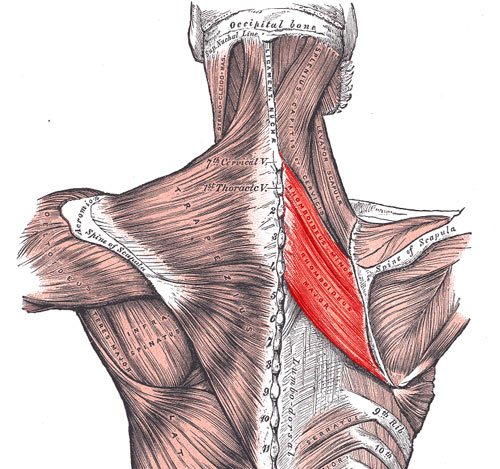rhomboid

The rhomboideus minor and rhomboideus major (in red).
The two rhomboid muscles extend as parallel bands from the spines of the vertebrae to the scapula.
They pull the scapula upward and backward, and help to rotate it.
The rhomboideus minor runs from the ligamentum nuchae and
the seventh cervical spine (see cervical
vertebrae to the medial margin of the scapula opposite its spine. The rhomboideus major, about twice the width of the minor,
extends from the upper thoracic spines (see thoracic
vertebrae) and supraspinous ligaments to the medial margin of the scapula
from the spine to the inferior angle.
The rhomboids are supplied by a special branch, called the nerve to the rhomboids, from the fifth cervical nerve, C5. The nerve to the rhomboids is a long, slender nerve that usually arises in common with the upper root of the nerve to the serratus anterior. It passes downward and laterally and, accompanied by the deep branch of the transverse cervical artery, descends under cover of the levator scapulae and the two rhomboids, near the scapula. It supplies one or two twigs to the levator scapulae and ends in the rhomboids.


